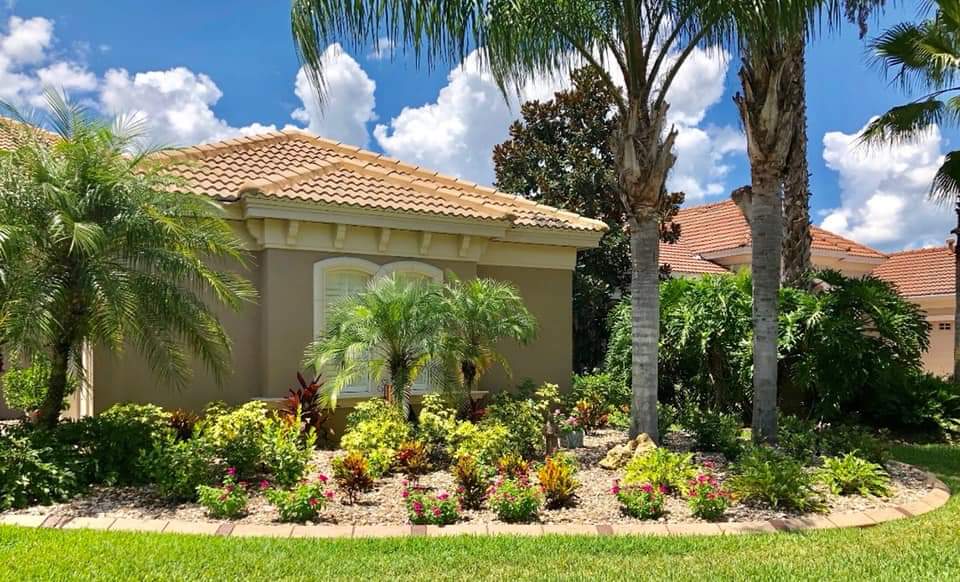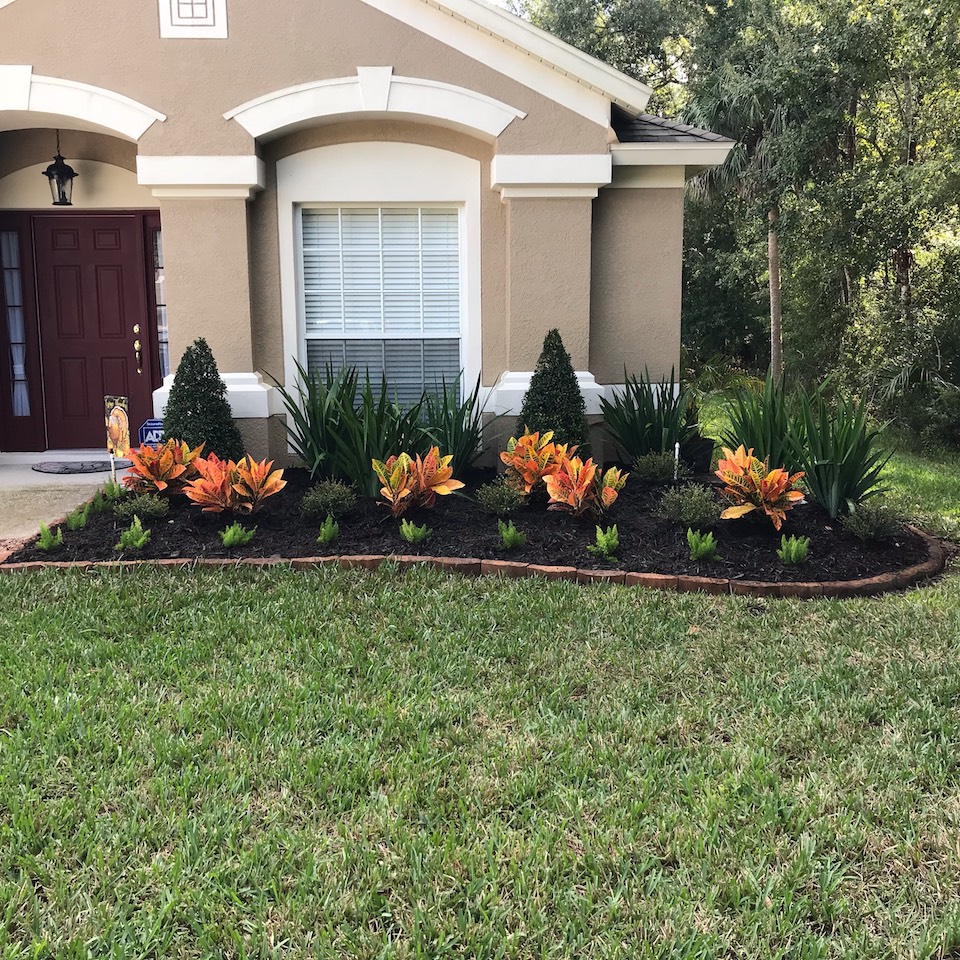Discover Creative Solutions with Specialist Palm Desert Landscaping
Discover Creative Solutions with Specialist Palm Desert Landscaping
Blog Article
A Comprehensive Overview to Designing and Implementing Effective Landscape Design Solutions
The art and science of landscape design extend beyond plain looks; they involve a thoughtful combination of layout principles, environmental stewardship, and sensible implementation. What techniques can one utilize to ensure these landscapes not only grow yet also flourish in consistency with their environments?

Recognizing Landscape Layout Principles
One might wonder what fundamental elements add to efficient landscape layout. At its core, successful landscape layout rests on numerous key principles that guide the plan and selection of components within a space. These concepts include unity, proportion, equilibrium, and rhythm, each offering to develop an unified outdoor atmosphere.
Unity describes the cohesive partnership among different parts, guaranteeing that they function with each other aesthetically and functionally. Balance can be attained through balanced or asymmetrical plans, permitting the landscape to feel stable and welcoming. Percentage entails understanding the scale of aspects in connection with each other and the surrounding atmosphere, advertising aesthetic consistency and convenience.

Assessing Your Outdoor Space
Before carrying out the concepts of landscape layout, a complete analysis of your outdoor space is important. This preliminary examination assists define the range of your landscape design task and guarantees that your design straightens with the special characteristics of your property. Begin by assessing the measurements of your area, taking accurate dimensions to understand the offered area for different aspects such as outdoor patios, gardens, and pathways.
Next, observe the existing features of your landscape, consisting of topography, dirt top quality, and drain patterns. These elements substantially affect plant choice and placement. In addition, analyze the sunlight exposure throughout various areas throughout the day, as this will influence the kinds of plants that flourish in your garden.
Consider the microclimates developed by frameworks, trees, and other obstacles, as they can impact temperature and dampness levels. Take note of any kind of existing plants or hardscape aspects that you want to preserve or eliminate. This detailed evaluation lays the foundation for a knowledgeable and effective landscape design solution, ensuring that your design is not just visually pleasing yet lasting and also practical for years to find.
Lasting Landscaping Strategies
Incorporating sustainable landscaping strategies is vital for developing an ecologically liable outdoor area. These techniques not only promote eco-friendly balance but also improve the practical and aesthetic worth of a landscape. One fundamental technique is the usage of indigenous plants, which call for less water and maintenance while supporting local wildlife. Applying reliable irrigation systems, such as drip watering, decreases water waste and ensures that plants get appropriate dampness.

An additional effective technique is the calculated positioning of shrubs and trees to offer all-natural windbreaks and color, hence lowering energy costs (Palm Desert Landscaping). Rain gardens can be integrated into the landscape style to take care of stormwater drainage effectively, filtering pollutants before they go into waterways
Selecting the Right Plants
Choosing the right plants for your landscape is crucial to achieving both visual appeal and eco-friendly harmony. The procedure starts with an understanding of your neighborhood environment, dirt problems, and the particular microenvironments within your landscape. Analyzing variables such as sunlight exposure, dampness degrees, and existing plants will certainly assist you choose plants that grow in your special setting.
Take into consideration incorporating native plants, as they are well-adapted to local conditions, call for much less upkeep, and support local wildlife. In addition, picking a varied range of species can enhance biodiversity while reducing the risk of condition and bug episodes. It is vital to examine the growth habits, growing durations, and seasonal colors of potential plants to develop a dynamic and cohesive landscape.
In addition, think of the intended use the area; for example, if the location will experience high foot traffic, choose resilient ground covers. By thoughtfully choosing plants that straighten with both your visual goals and ecological needs, you can create a lasting landscape that not only improves your building however additionally adds favorably to the bordering ecological community.

Application and Upkeep Approaches
Once the right plants have been selected for your landscape, the emphasis moves to reliable execution and continuous upkeep approaches. Effective installation begins with proper site preparation, which includes soil testing to identify nutrient levels and pH, complied with by changing the soil as needed. Thoroughly arrange plants according to their development habits and light demands, making sure appropriate spacing to advertise healthy and balanced growth.
Irrigation is a critical component of execution. Develop a watering timetable that considers the certain demands of each plant species, changing for seasonal changes. Making use of drip watering systems can improve water read this article effectiveness and decrease runoff.
Upkeep approaches check my source have to be carried out to make sure the longevity and vitality of your landscape. Routine jobs include weeding, mulching, and pruning to control development and stop illness. Fertilization needs to be carried out based on dirt examinations, offering the necessary nutrients without over-fertilizing.
Keeping track of for bugs and diseases is crucial; early detection can prevent substantial damage. Lastly, seasonal modifications to maintenance regimens, such as preparing and winterizing perennials for springtime growth, will certainly make sure that your landscape remains visually enticing and healthy year-round.
Final Thought
Effective execution and recurring upkeep further guarantee the durability and vitality of landscapes. By integrating these aspects, landscapes can be changed right into gorgeous, practical atmospheres that promote biodiversity and contribute favorably to area health.
One could question what fundamental components add to reliable landscape layout. At its core, effective landscape style pivots on a number of key principles that guide the arrangement and option of aspects within a space.Picking the right plants for your landscape is critical to accomplishing both visual charm and ecological consistency. It is important to assess the development behaviors, blooming durations, and seasonal colors of prospective plants to develop a dynamic original site and natural landscape.
Once the appropriate plants have actually been selected for your landscape, the focus changes to reliable application and continuous maintenance approaches.
Report this page